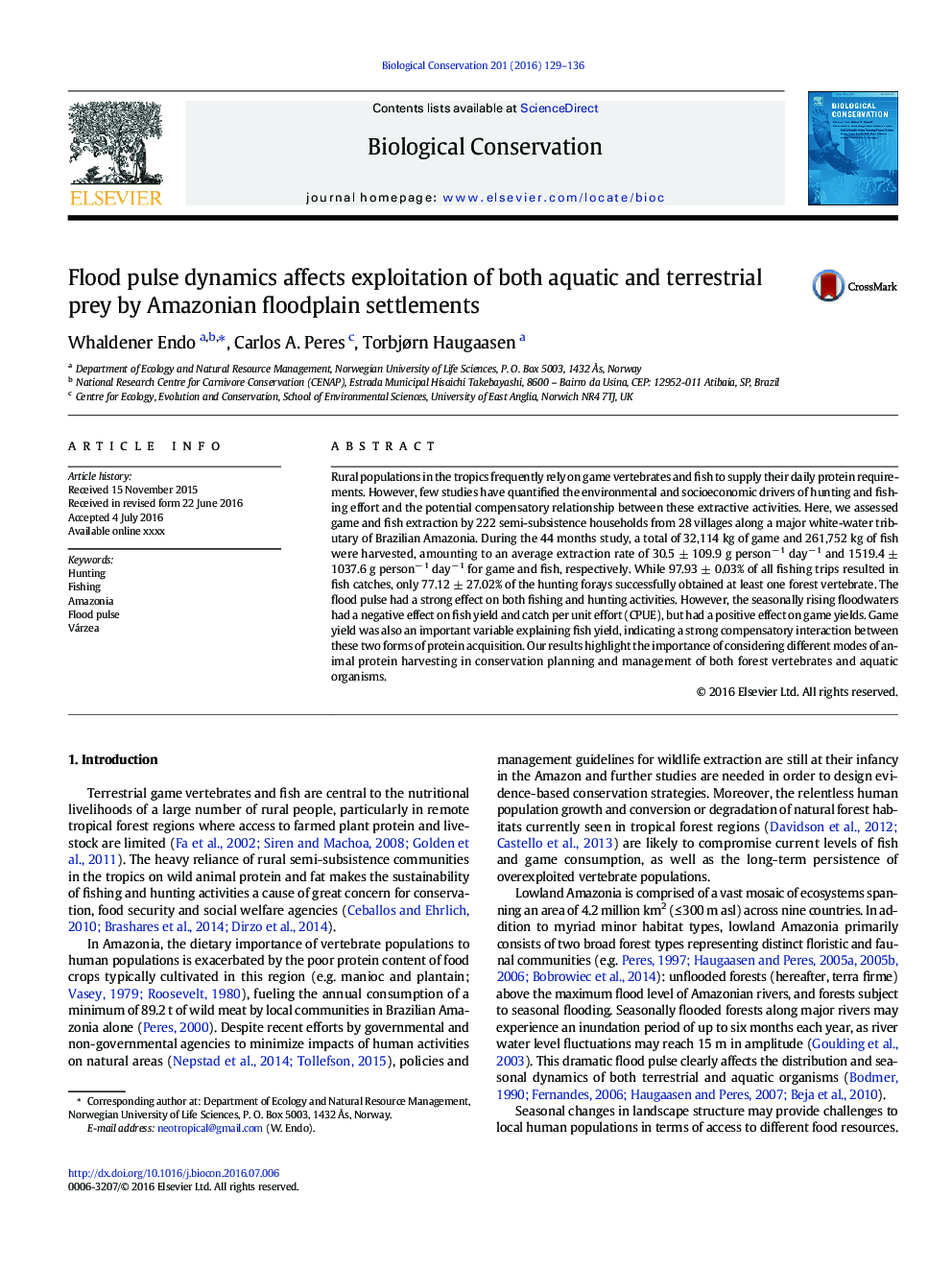| Article ID | Journal | Published Year | Pages | File Type |
|---|---|---|---|---|
| 6298180 | Biological Conservation | 2016 | 8 Pages |
Abstract
Rural populations in the tropics frequently rely on game vertebrates and fish to supply their daily protein requirements. However, few studies have quantified the environmental and socioeconomic drivers of hunting and fishing effort and the potential compensatory relationship between these extractive activities. Here, we assessed game and fish extraction by 222 semi-subsistence households from 28 villages along a major white-water tributary of Brazilian Amazonia. During the 44 months study, a total of 32,114 kg of game and 261,752 kg of fish were harvested, amounting to an average extraction rate of 30.5 ± 109.9 g personâ 1 dayâ 1 and 1519.4 ± 1037.6 g personâ 1 dayâ 1 for game and fish, respectively. While 97.93 ± 0.03% of all fishing trips resulted in fish catches, only 77.12 ± 27.02% of the hunting forays successfully obtained at least one forest vertebrate. The flood pulse had a strong effect on both fishing and hunting activities. However, the seasonally rising floodwaters had a negative effect on fish yield and catch per unit effort (CPUE), but had a positive effect on game yields. Game yield was also an important variable explaining fish yield, indicating a strong compensatory interaction between these two forms of protein acquisition. Our results highlight the importance of considering different modes of animal protein harvesting in conservation planning and management of both forest vertebrates and aquatic organisms.
Related Topics
Life Sciences
Agricultural and Biological Sciences
Ecology, Evolution, Behavior and Systematics
Authors
Whaldener Endo, Carlos A. Peres, Torbjørn Haugaasen,
